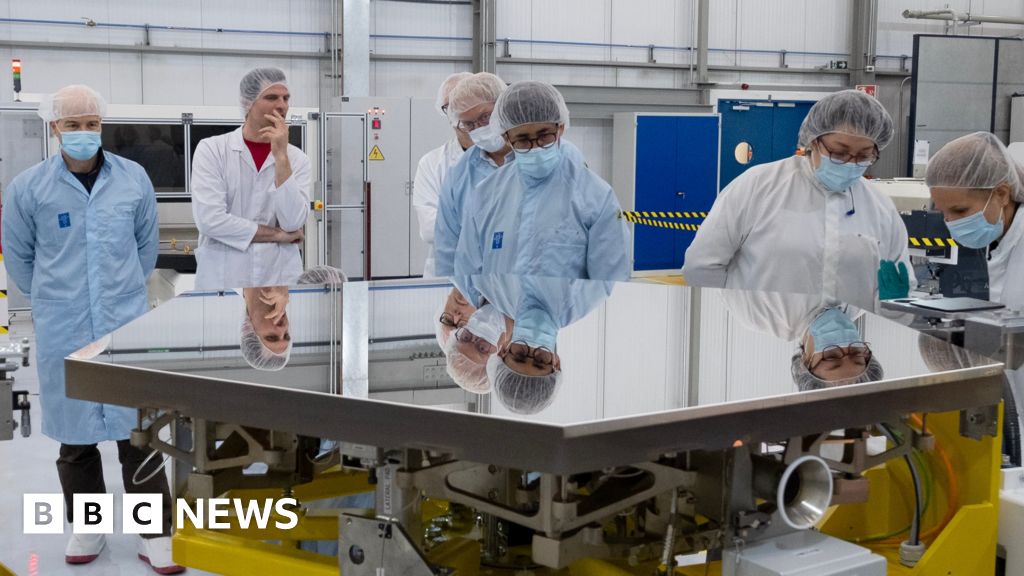Dr Elise Vernet is an adaptive optics specialist at ESO and has been overseeing development of the five giant mirrors that will gather and channel light to the telescope’s measuring equipment.
Each of the ELT’s custom mirrors is a feat of optical design.
Dr Vernet describes the 14ft (4.25m) convex M2 mirror as “a piece of art”.
But perhaps the M1 and M4 mirrors best express the level of intricacy and precision required.
The primary mirror, M1, is the largest mirror ever made for an optical telescope.
“It’s 39m [128ft] in diameter, made up of [798] hexagonal mirror segments, aligned so that it behaves as a perfect monolithic mirror,” says Dr Vernet.
M1 will collect 100 million times more light than the human eye and must be able to maintain position and shape to a level of precision 10,000 times finer than a human hair.
The M4 is the largest deformable mirror ever made and will be able to change shape 1,000 times per second to correct for atmospheric turbulence and the vibrations of the telescope itself that could otherwise distort imagery.
Its flexible surface is made up of six petals of a glass-ceramic material that is less than 2mm (0.075in) thick.
The petals were made by Schott in Mainz, Germany and then shipped to engineering firm Safran Reosc just outside Paris, where they were polished and assembled into the complete mirror.
All five mirrors are nearing completion and will soon be transported to Chile for installation.

Dr. Thomas Hughes is a UK-based scientist and science communicator who makes complex topics accessible to readers. His articles explore breakthroughs in various scientific disciplines, from space exploration to cutting-edge research.








